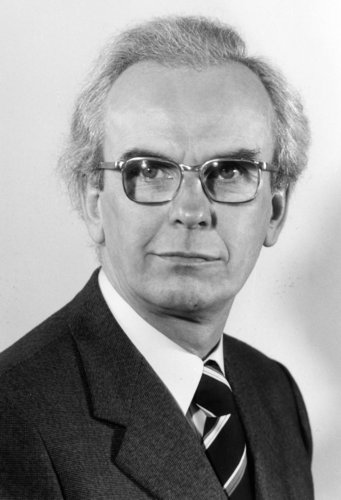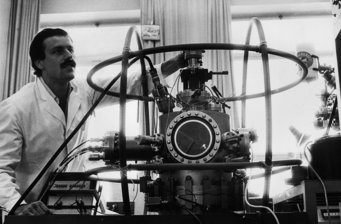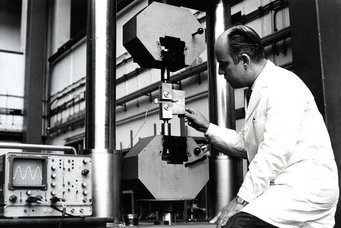
09: The Restructuring of the Max-Planck-Institut für Eisenforschung in the 1970s
There were increasing tensions between the Verein Deutscher Eisenhüttenleute (VDEh) and the Max-Planck-Institut für Eisenforschung (MPIE) during the 1960s . These resulted in new rules for patent exploitation and in a change of the institute's legal form.[1]
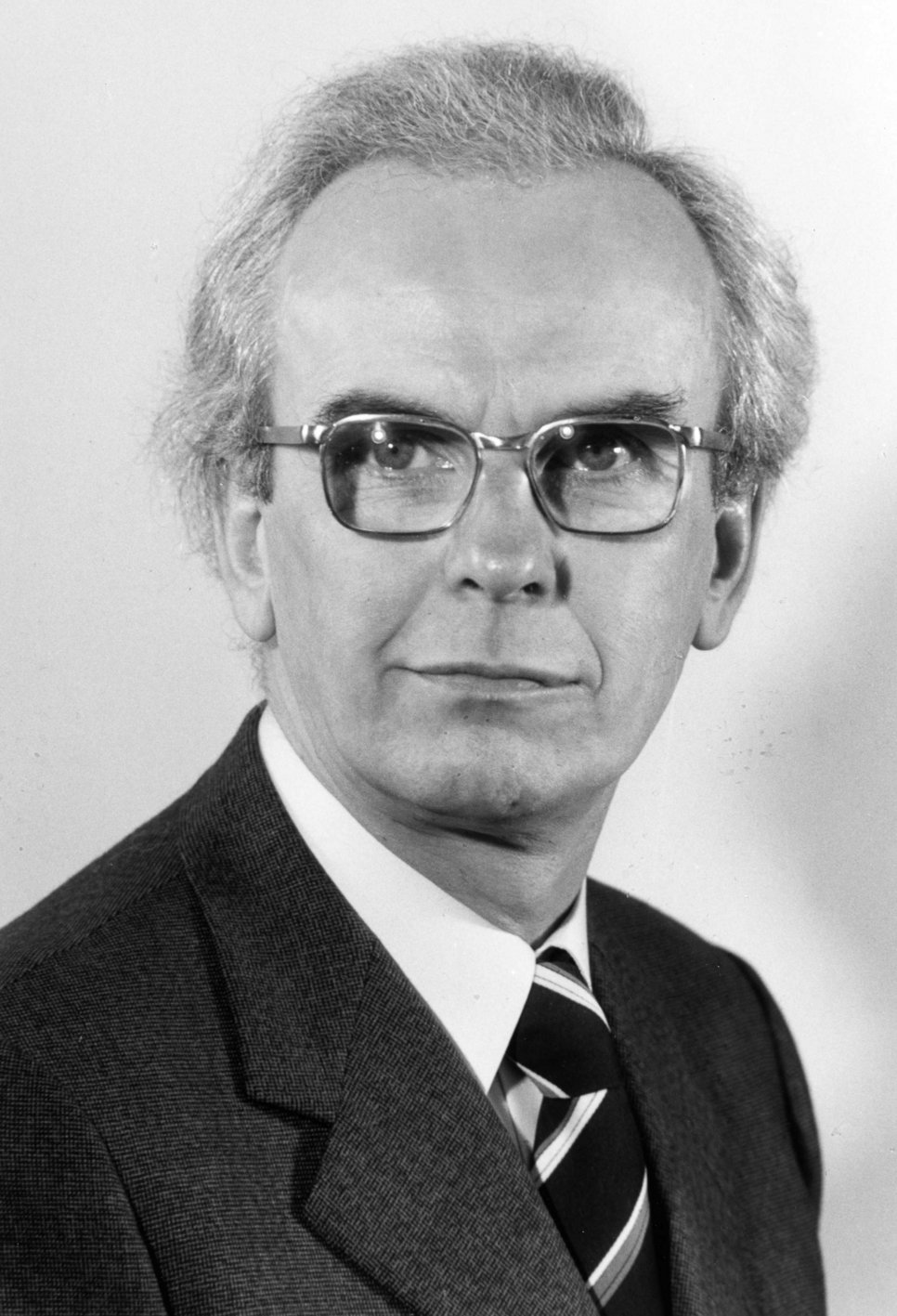
The main reason for this was the influence which the VDEh as principal funder of the MPIE exerted on the director of the institute, Willy Oelsen, as well as on the scientific work of the institute. These problems were noticed by the Max-Planck-Gesellschaft (MPG) as stated in an internal memo of 1965.[2] In addition, the exploitation of patents was a constant topic of discussion between the MPIE and the VDEh because of the extremely complicated legal issues involved.[3]
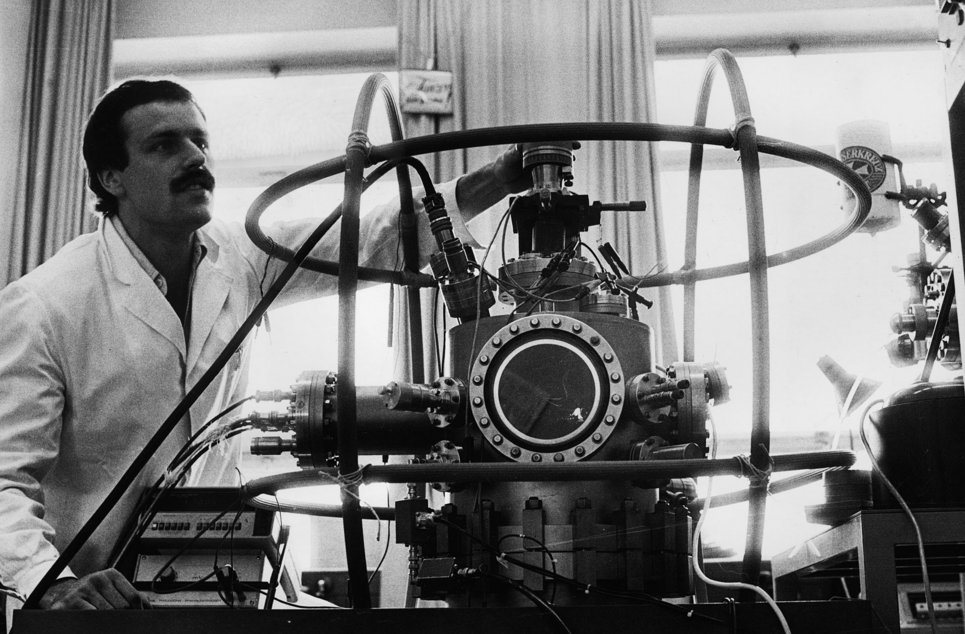
Willy Oelsen died on 25th July 1970 shortly before being given emeritus status. A comprehensive restructuring of the MPIE finally took place under Oelsen's successor Hans-Jürgen Engell who took over the management of the institute at the beginning of 1971. At the same time, the MPIE changed its legal form to a GmbH (limited liability company) whose partners were the VDEh and the MPG in equal shares.[4] However, it was not until 1980 that both partners were able to reach a conclusive agreement about each contributing half of the basic funding of the institute[5]. Besides Hans-Jürgen Engell, who acted as scientific director, Rolf Weidemann was appointed to be commercial director. The board of trustees was replaced by a board of directors comprising six representatives of the VDEh, four representatives of the MPG and one representative each of the provincial and the federal governments.[6] In addition, a twelve-man advisory board was formed in 1973 which had the task of advising both the MPIE partners and the scientific management in the planning, execution and evaluation of their research work. The advisory board was to be made up of internationally recognised representatives of those disciplines in research and development which were close to the scope of studies of the institute. They were to be nominated by the scientific management of the institute and to be appointed by the board of directors for a period of three years.[7]
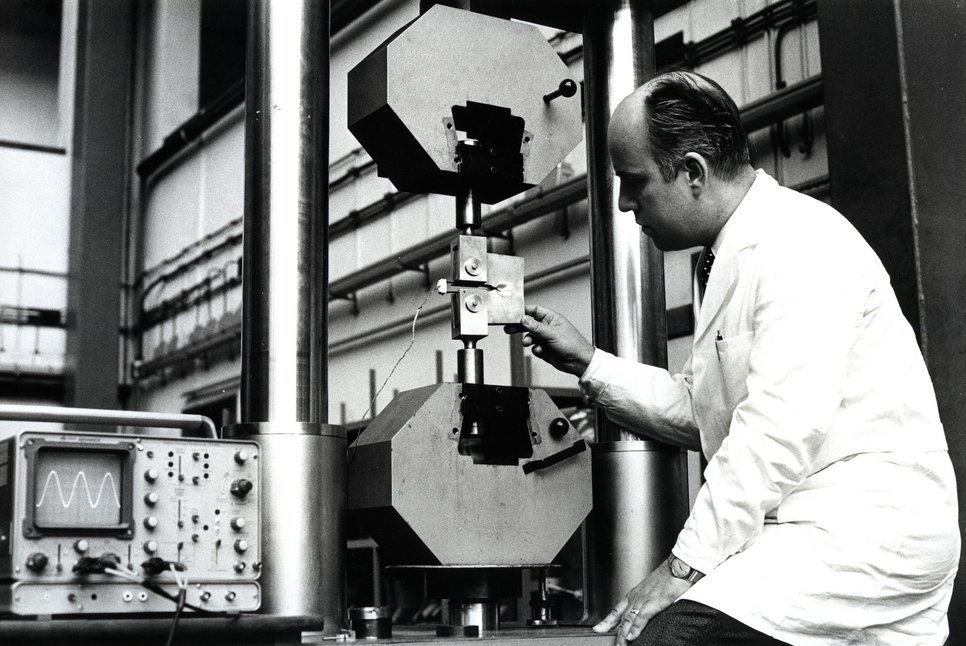
Engell structured the MPIE into five departments for materials science, metal physics, forming technology, physical chemistry and metallurgy, with some of the previously existing laboratories merged into these departments as working groups.[8] During this process, the focus of the institute's work moved from the area of metal physics to the basics of metallurgical process technology and to steel research.[9] All in all, Engell reinforced the institute's orientation towards basic research which was both interdisciplinary and knowledge-oriented but which still included an intensive transfer into practical application. Application-oriented work, however, was to be moved to the operational research institute of the VDEh.[10]
[1] Flachowsky, Sören: Das Max-Planck-Institut für Eisenforschung Düsseldorf; in: Gruss, Peter; Rürup, Reinhard (Hrsg.): Denkorte. Max-Planck-Gesellschaft und Kaiser-Wilhelm-Gesellschaft: Brüche und Kontinuitäten 1911-2011, Dresden 2010, S. 128-135, S. 133.
[2] Flachowsky, Sören: Von der Wagenburg der Autarkie zu transnationaler Zusammenarbeit. Der Verein Deutscher Eisenhüttenleute und das KWI/MPI für Eisenforschung 1917-2009, in: Maier, Helmut; Zilt, Andreas; Rasch, Manfred (publ..): 150 Jahre Stahlinstitut VDEh 1860-2010, Essen, 2010, p. 696 f.
[3] Flachowsky, Sören: Von der Wagenburg der Autarkie zu transnationaler Zusammenarbeit. Der Verein Deutscher Eisenhüttenleute und das KWI/MPI für Eisenforschung 1917-2009, in: Maier, Helmut; Zilt, Andreas; Rasch, Manfred (publ.): 150 Jahre Stahlinstitut VDEh 1860-2010, Essen, 2010, p. 696 f.
[4] Max-Planck-Institut für Eisenforschung GmbH Düsseldorf: Bericht über das Jahr 1971, Düsseldorf, 1972, no page.
[5] Flachowsky: Von der Wagenburg der Autarkie zu transnationaler Zusammenarbeit, p. 704.
[6] Max-Planck-Gesellschaft (publ.): Berichte und Mitteilungen. Max-Planck-Institut für Eisenforschung, issue 3/1978, Munich, 1978, p. 14 f.
[7] Max-Planck-Institut für Eisenforschung GmbH Düsseldorf: Bericht über das Jahr 1973, Düsseldorf, 1974, p. 50 f.
[8] MPIE: Bericht über das Jahr 1971, no page.
[9] Flachowsky: Von der Wagenburg der Autarkie zu transnationaler Zusammenarbeit, p. 700.
[10] Ibid., p. 699; Id.: Das MPIE Düsseldorf, p. 133 f.
